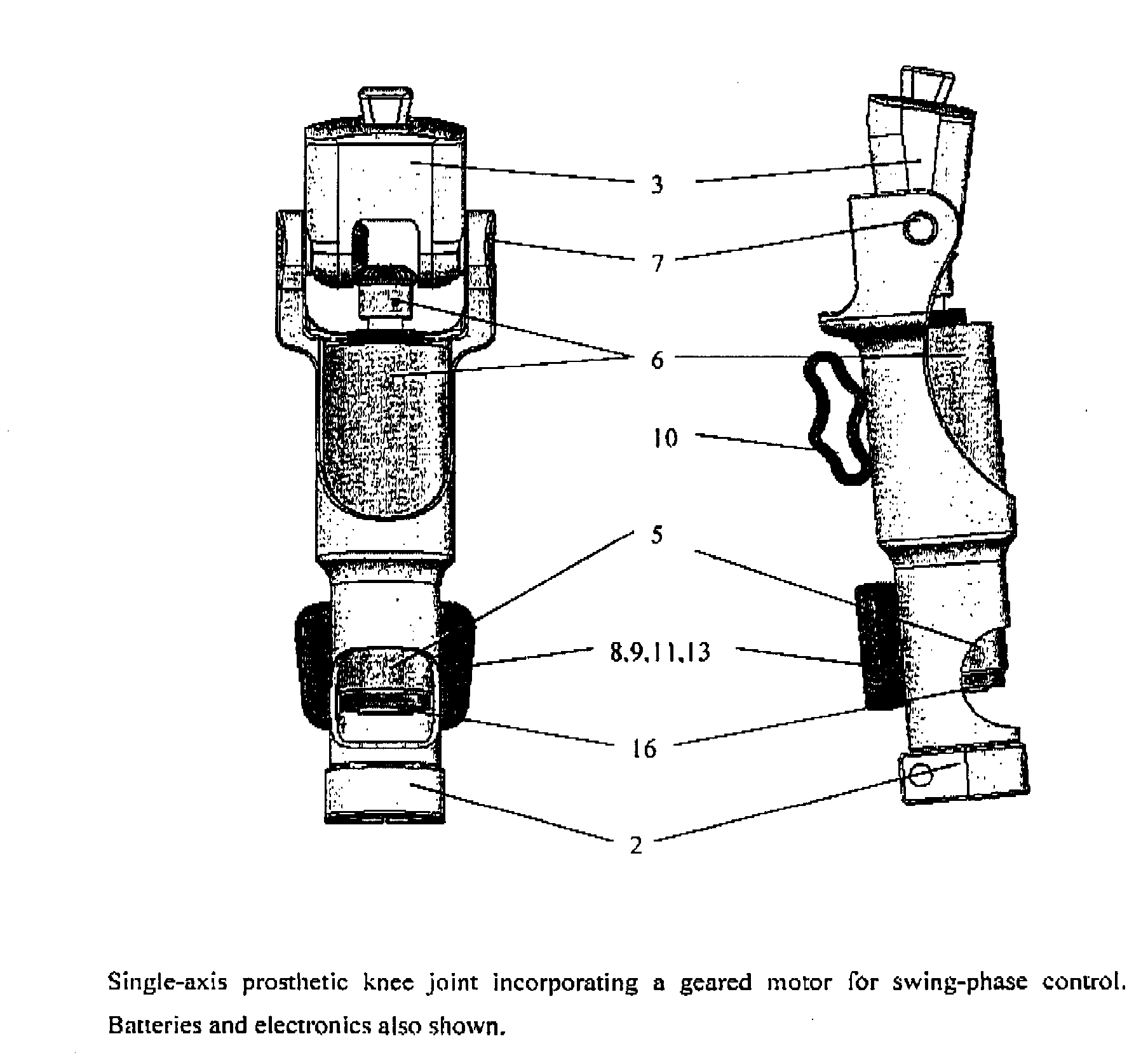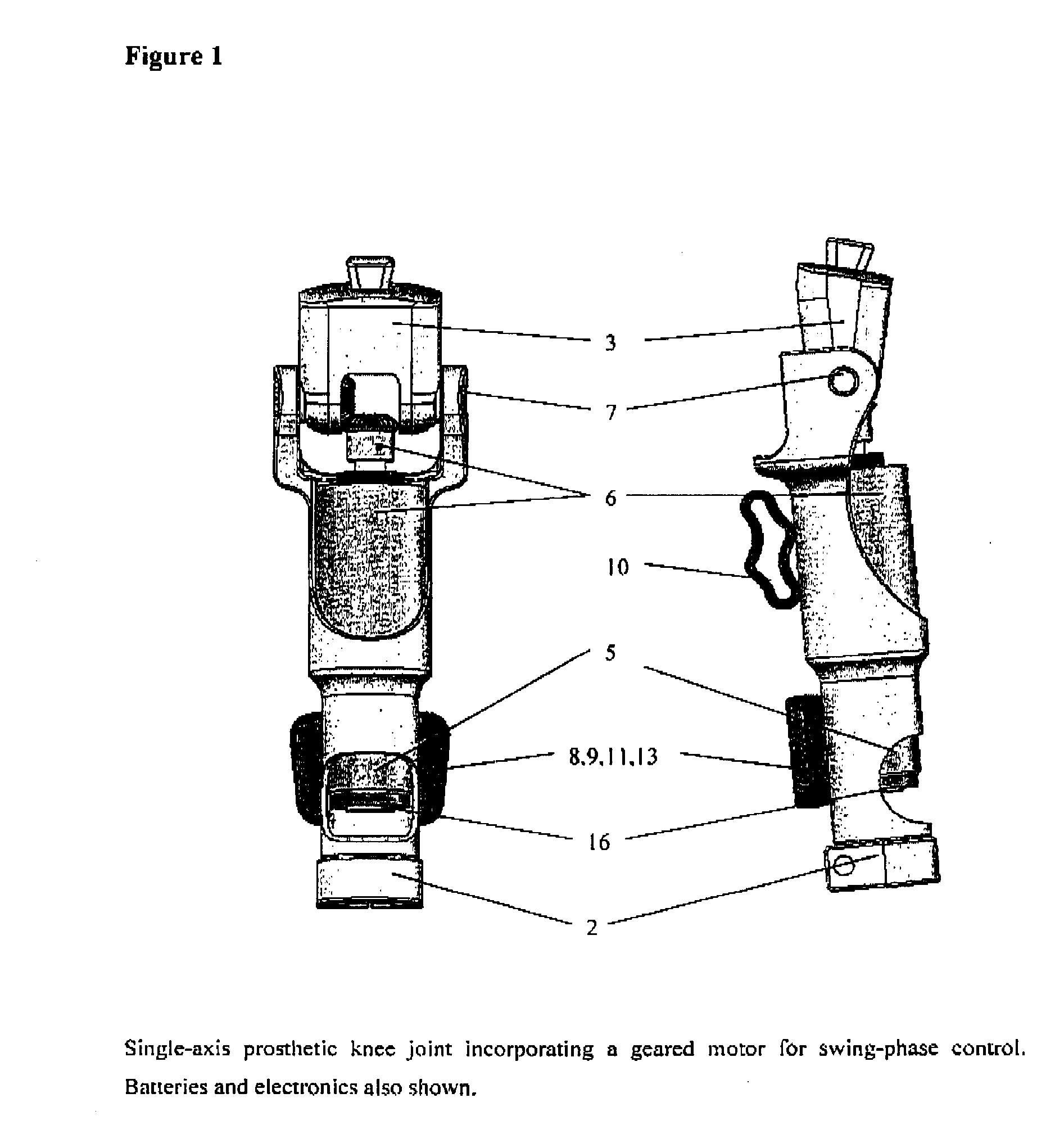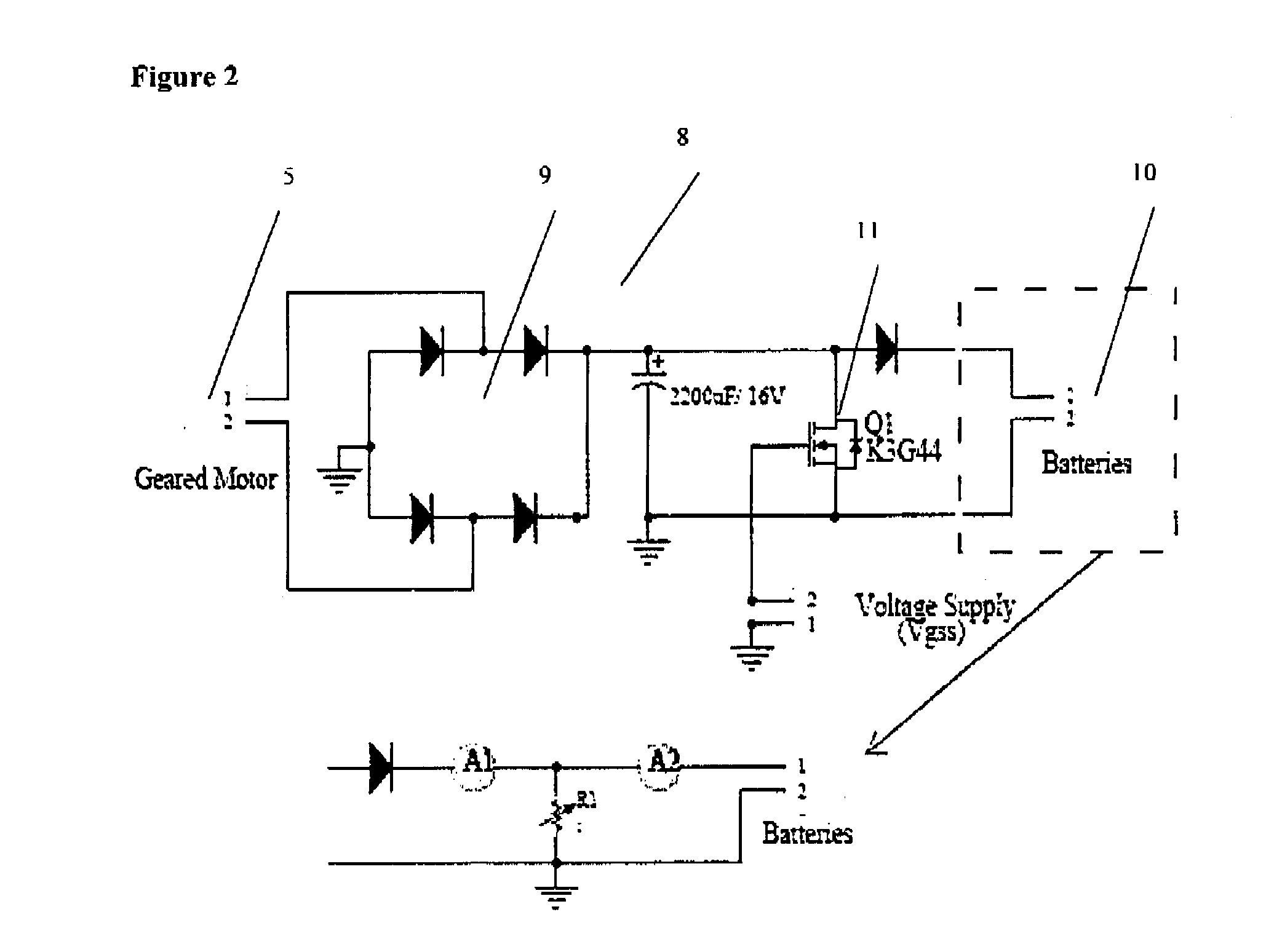Generator for prosthesis and orthosis
- Summary
- Abstract
- Description
- Claims
- Application Information
AI Technical Summary
Benefits of technology
Problems solved by technology
Method used
Image
Examples
Embodiment Construction
[0023]The following description relates to the preferred embodiments of the present invention for a generator in a prosthetic or orthotic joint. In accordance with a preferred embodiment of the present invention there is provided a generator for a prosthesis having a means for generating electrical current using body energy transmitted to the prosthesis. Body energy may be further defined as energy emanating from activities from the body such as mechanical, vibrational, psychological, thermal, ultrasonic (sound waves via muscles), or biochemical body energy, current by way of example only, that is then transmitted to the prosthesis and converted into an electrical current. The mode of transmission of the body energy to the prosthesis may vary depending an the type of body energy being generated. For example, mechanical body energy may be generated and transmitted by the movement of the body or through a force being exerted within the body.
[0024]The means for generating electrical cu...
PUM
 Login to View More
Login to View More Abstract
Description
Claims
Application Information
 Login to View More
Login to View More - R&D
- Intellectual Property
- Life Sciences
- Materials
- Tech Scout
- Unparalleled Data Quality
- Higher Quality Content
- 60% Fewer Hallucinations
Browse by: Latest US Patents, China's latest patents, Technical Efficacy Thesaurus, Application Domain, Technology Topic, Popular Technical Reports.
© 2025 PatSnap. All rights reserved.Legal|Privacy policy|Modern Slavery Act Transparency Statement|Sitemap|About US| Contact US: help@patsnap.com



